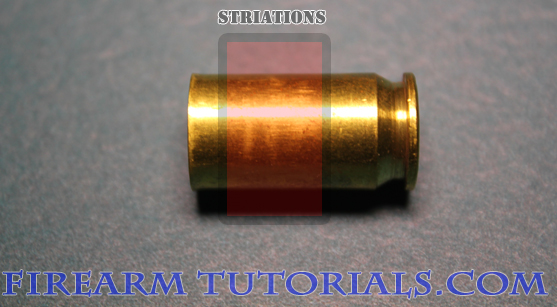Ballistics: crime scene investigation and silencers
I am often asked if police can tell if a suppressor was used in a crime. The answer is generally no, but there are some things to consider. Crimes involving bullets are investigated using various aspects of ballistics. Some or all may be used depending on what evidence is available.
Depending on the crime and gun used there may or may not be shell casings for inspection. Generally bullets or bullet fragments are often recovered and under a microscope can yield a "fingerprint" determined by the striations. Depending on the gun, striations are usually found on the shell case as well. 
Striations are formed as the bullet is pushed down the barrel due to the spiral (rifling) found on the inside of a gun barrel. Fired bullets can be matched using these striations to identify the gun it was fired from with a very high certainty. Here is where the concept of using a suppressor comes into play.
Modern suppressors using a baffle-type design never make contact with the bullet once it leaves the barrel. As the bullet passes through a suppressor, the gasses are trapped in order to suppress the sound and muzzle flash. This process has no effect on the original striations left on the bullet once it exits the barrel. Therefore, the bullet itself would not show any differences between guns shot suppressed or unsuppressed.
However, due to the design of suppressors, there is an inherit amount of "blow back" which occurs as the suppressor baffles trap the excess gases. Since these gases do not exit the suppressor they are forced back down the breech of the gun. Once the shell case is ejected from a semi-automatic gun it is considerably more dirty than when a gun is fired unsuppressed.
So while a modern suppressor will not leave evidence of use on the actual bullet, the shell casings will leave clues as to the use of some device which added significant blow back or fouling to the shell cases.
 01/13/14 03:59:00 pm,
01/13/14 03:59:00 pm,